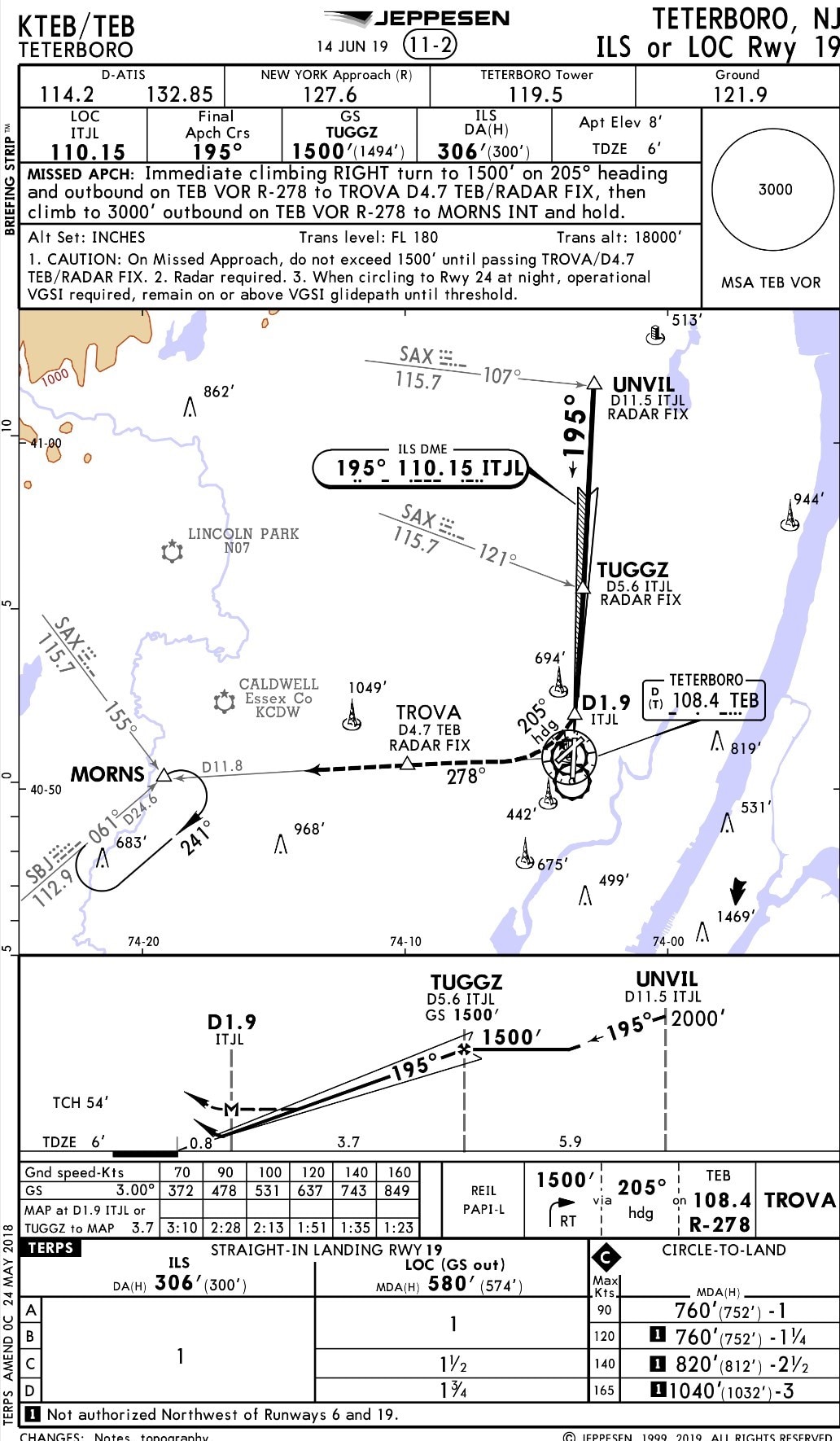Continuous 31 Descent to Glide Slope
In August 2019, Honeywell ran an article in the Direct-TO newsletter titled: "Unraveling Continuous Descent Final Approach, VNAV Using DA in lieu of MDA, and Derived Decision Altitudes." The article can be found on the Pilot Gateway. The article was widely read and received a lot of feedback, though – as one reader correctly pointed out – it lacked a key piece of information: guidance pertaining to the missed approach. In response, this article will serve as an addendum to the original to clarify the missed approach procedure from a Derived Decision Altitude (DDA).
Remember, the point of a DDA is to turn any non-precision approach into a precision-like approach by adding an altitude buffer to the Minimum Descent Altitude (MDA). The final approach can then be flown in several vertical modes, including Vertical Glide Path (VGP) and Flight Path Angle (FPA). Procedurally, it's treated like a precision approach by flying a continuous glide path to the runway with the Altitude Preselector set to the Missed Approach Altitude. No special authorization is necessary in the United States to execute approaches in this manner, and guidance can be found in FAA Advisory Circular 120-108.
One significant difference exists between doing a non-precision approach to an MDA using conventional "dive and drive" and using a DDA. Since the MDA is buffered (raised), it is very likely that the crew will arrive at its DDA prior to thecharted non-precision Missed Approach Point (MAP). If the missed approach procedure is "immediate climbing right/left turn to a specified altitude," the guidance in the Aeronautical Information Manual (AIM) regarding executing a missed approach prior to the Missed Approach Point (MAP) still applies. Paragraph 5-5-5 (a)(4) of AC 120-108 states:
"If executing a missed approach prior to reaching the MAP, fly the lateral navigation path of the instrument procedure to the MAP. Climb to the altitude specified in the missed approach procedure, except when a maximum altitude is specified between the Final Approach Fix and the Missed Approach Point. In that case, comply with the maximum altitude restriction. Note, this may require a continued descent on the final approach."
Additionally, AC 120-108 states:
"Flying the published VDA or GS will have the aircraft intersect the plane established by the MDA at a point before the MAP. Approaching the MDA, the pilot has two choices: continue the descent to land with required visual references, or execute a missed approach, not allowing the aircraft to descend below the MDA…. When executing a missed approach prior to the MAP and not cleared by an air traffic control (ATC) climb-out instruction, fly the published missed approach procedure.Proceed on track to the MAP before accomplishing a turn, comply with published altitude restrictions between the FAF and the MAP, and continue on or climb to the altitude specified in the missed approach procedure."
Figure 1 shows an example at Teterboro (KTEB) where the crew is cleared for the LOC runway 19 approach (assume glideslope is out of service).
 |
| Figure 1. ILS or LOC 19 Teterboro Used by permission © Jeppesen Sanderson, Inc., 1996, 2016 (Sample chart, not to be used for navigation) |
In this scenario, the published LOC MDA is 580 feet. Let's assume the crew applied a 60-foot buffer for its aircraft type, making a DDA of 640 feet. Assuming the crew flew a 3-degree flight path angle, it would arrive at its DDA about 2.15 miles from the runway threshold. Also notice that the charted non-precision MAP is 0.8 miles from the runway threshold (1.9 DME from ITJL). It's easy to see how in the confusion of a missed approach in heavily congested airspace, that upon reaching the DDA the crew would be tempted to start an immediate climbing right turn in accordance with the published textual missed approach procedure. Additional confusion may arise upon selection of the TO/GA button because the FMS would sequence the missed approach procedure and correctly display initial guidance to continue flying straight ahead to the MAP, even though the briefing likely consisted of the published missed approach instructions for an immediate climbing right turn.
In summary, when using DDAs for flying non-precision approaches, review the non-precision MAP and its location relative to the aircraft's location upon reaching the DDA. This is an important step in the briefing when using a DDA. In the event of a missed approach, the airplane will likely be at a point prior to the published MAP. It's also important to remember that a climb may be commenced toward the published missed approach altitude, but operatorsshouldn't commence any turns until they have reached the published non-precision MAP on the procedure.
Program Pilot David Rogers supports EPIC and NG FMS-equipped Cessna and Gulfstream aircraft for Honeywell Flight Technical Services. He can be reached via email at David.Rogers@honeywell.com .
Source: https://aerospace.honeywell.com/us/en/about-us/news/2020/05/vnav-using-the-mda
0 Response to "Continuous 31 Descent to Glide Slope"
Post a Comment